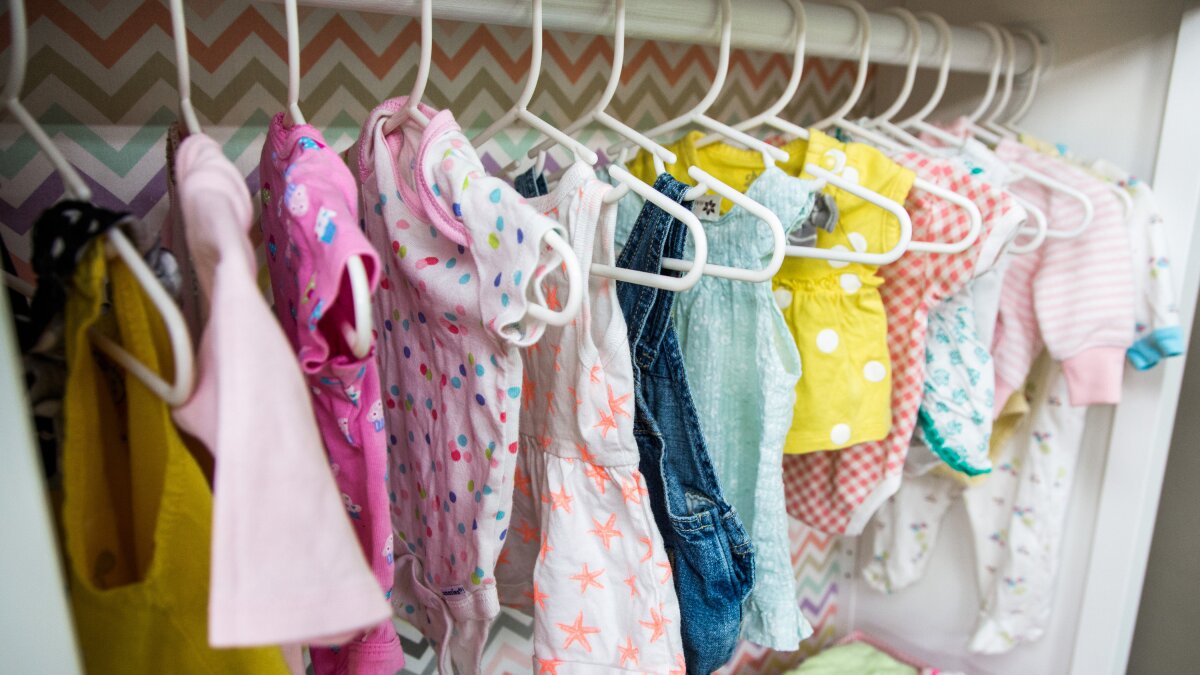Creating an eco-friendly baby wardrobe is a meaningful way to reduce your environmental footprint while keeping your little one comfortable, stylish, and safe. Babies grow quickly, often outgrowing clothes within months, making it even more important to adopt sustainable practices to minimize waste. By making conscious choices, parents can prioritize sustainability without sacrificing quality, affordability, or functionality. Opting for eco-friendly materials like organic cotton, reusable items such as cloth diapers, and durable designs ensures your baby’s needs are met responsibly.
This guide offers practical insights into sustainable shopping for baby clothes and accessories, helping you choose items that align with your values while supporting ethical production. Ultimately, these mindful decisions benefit your family, reduce environmental impact, and contribute positively to the health of our planet.
Why Choose Sustainable Baby Clothes?
Sustainability in shopping is not just a trend; it is a necessity for preserving resources and protecting the environment. Baby clothes are often manufactured in high volumes, leading to resource-intensive production processes. Opting for sustainable alternatives reduces environmental impact by minimizing waste, conserving energy, and promoting ethical practices.
Sustainable baby clothes are crafted from organic or recycled materials, ensuring they are free from harmful chemicals and safe for delicate skin. Additionally, their durability reduces the need for frequent replacements, saving money in the long run. Choosing eco-friendly options supports fair labor practices and aligns with responsible parenting values.
By making sustainable choices, you also set an example for future generations, fostering an appreciation for eco-conscious living. Sustainability begins with small, meaningful changes like rethinking your approach to baby clothes shopping and prioritizing quality over quantity.
Creating a Sustainable Wardrobe
An eco-friendly baby wardrobe requires thoughtful planning and a commitment to reducing waste. Begin by assessing your baby’s essential needs, such as sleepwear, daywear, and seasonal clothing. Focus on versatile pieces that serve multiple purposes, like rompers and bodysuits, which are comfortable and practical for various activities.
When shopping, consider secondhand stores, online resale platforms, and community swaps as excellent sources for pre-loved baby clothes. These options extend the lifecycle of garments, reducing waste and saving resources. If you prefer new items, choose brands that emphasize sustainable practices, such as using organic cotton or recycled fabrics.
Investing in high-quality clothes that grow with your baby is another effective strategy. Adjustable waistbands, foldable cuffs, and stretchy fabrics accommodate growth spurts, reducing the need for frequent purchases. Washable and durable clothing further ensures longevity, making them an eco-conscious choice for your baby’s wardrobe.
Eco-Friendly Fabrics
Choosing the right fabrics is crucial when building a sustainable baby wardrobe. Materials should be gentle on your baby’s skin while minimizing environmental impact. Organic cotton is a popular choice for its softness and eco-friendly production process, free of synthetic pesticides and fertilizers. Bamboo fabric, known for its breathability and hypoallergenic properties, is another excellent option.
Recycled materials, such as polyester made from post-consumer plastics, offer a sustainable alternative to traditional synthetic fabrics. These options reduce waste and promote resource efficiency without compromising durability. Wool and hemp are other natural fibers that combine comfort with sustainability, offering insulation and moisture-wicking properties for year-round use.
When shopping for baby clothes, check for certifications like GOTS (Global Organic Textile Standard) or OEKO-TEX, which guarantee eco-friendly production standards. These certifications provide peace of mind, ensuring that the materials used are safe for your child and the planet.
Incorporating Sustainability Beyond Clothes
Sustainability extends beyond clothing choices and can influence other aspects of baby-related shopping. Accessories like bibs, blankets, and hats can also be sourced from eco-friendly brands or secondhand stores. Prioritize reusable and multi-functional items, such as swaddles that double as burp cloths or nursing covers.
For gifts and special occasions, consider incorporating eco-friendly wrapping options. For example, using festive gift wrap made from recycled or biodegradable materials adds a sustainable touch to baby presents. This thoughtful approach minimizes waste while maintaining the charm of celebratory moments.
Furthermore, adopt sustainable laundering practices to maintain your baby’s clothes while reducing energy and water consumption. Wash garments in cold water and air-dry whenever possible, as these methods preserve fabric quality and lower your environmental impact.
Creating a Long-Lasting Impact
Sustainable shopping for baby clothes is a step towards a broader commitment to environmental responsibility. By embracing these practices, you contribute to reducing textile waste, conserving resources, and supporting ethical production processes. Start by educating yourself about eco-conscious brands and exploring secondhand markets, ensuring every purchase aligns with your values.
A minimalist approach to your baby’s wardrobe not only promotes sustainability but also simplifies daily life. Focus on quality pieces that are versatile, durable, and timeless, reducing the need for frequent replacements. Sharing or donating outgrown clothes is another impactful way to extend their life cycle and support other families.
As you continue to make sustainable choices, remember that every small effort adds up. Whether you’re choosing organic fabrics, exploring secondhand options, or embracing eco-friendly gift ideas like festive pumpkin gift wrap, your actions set a positive example for your child and contribute to a healthier planet for future generations.
Summary
Building an eco-friendly baby wardrobe is an achievable goal with lasting benefits for your family and the environment. Thoughtfully choosing sustainable shopping practices, like opting for high-quality materials and eco-friendly fabrics, helps create a wardrobe that seamlessly blends style, functionality, and responsibility. These choices not only provide comfort and safety for your little one but also contribute to reducing textile waste and supporting ethical manufacturing processes.
Every choice you make, from selecting durable, versatile clothing to incorporating thoughtful, sustainable gift options, demonstrates your commitment to an eco-conscious lifestyle. Start your journey toward sustainability today, embracing small yet impactful steps that can lead to meaningful, long-term change for your child and the planet.

